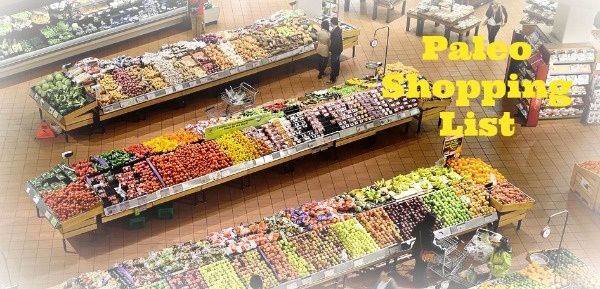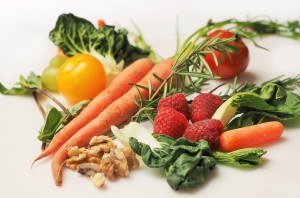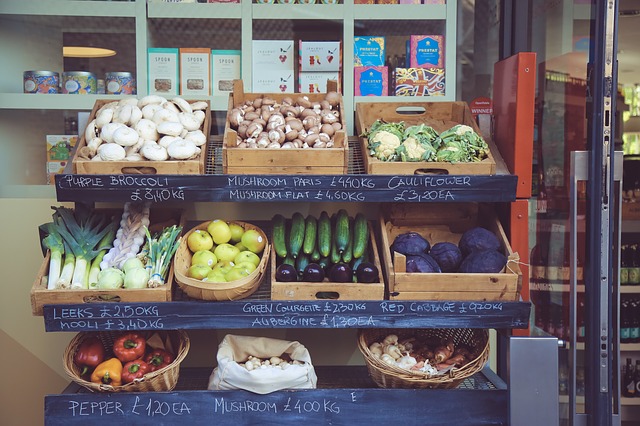
Paleo Shopping List: What Should I Buy?
If you’re considering making a switch from the Standard American Diet (SAD) to Paleo, or even just cleaning up your diet to resemble more of a paleo way of eating, the first thing you need to do is stock your kitchen so that you have the essentials on hand to set yourself up for success. We’re going to help you do that with a “paleo shopping list” so you’re armed with a game plan before you set out.
It’s Not As Intimidating As You Think
Shopping for any new diet can feel a bit overwhelming. Even if you’ve done your research and know the rules for the types of food you should and shouldn’t buy, you could still walk into the grocery store feeling a bit anxious. If you’re not careful and prepared, you could also end up at the checkout with your jaw on the floor when you see the total of your bill! Don’t worry, our paleo shopping list will help.
A common argument about eating paleo is that it’s expensive. To that, we can say yes, buying higher quality food costs a little more (you get what you pay for, right?), but here are a couple of things to consider.
First, you’ll save money by NOT buying packaged food, soda, sugary snacks, etc. which will offset the extra you’ll spend on good food.
Second, switching to a paleo diet doesn’t mean you have to be perfect and buy ONLY organic or grass-fed or obscure products. Thus, “Progress, not perfection” is what you want to keep in mind.
Hence, decide what you’re willing to cut out, where you’re willing to spend more, and make a list. Stick to the basics at first and build from there.
The Basics of Paleo Shopping
What to Cut Out:
A major key of eating paleo is cutting out highly processed food. Also, you’ll want to stay away from dairy and grains. Simply put, if our ancestors wouldn’t recognize it as food, then we shouldn’t eat it either. To learn more about the paleo diet, click here.
You’re going to find as you follow this paleo shopping list throughout the store that you’re going to skip many of the inner aisles. The majority of your time is going to be spent around the edges in the fresh food/produce department and meat departments. While you are shopping, here are a few basic things to remember:
What to Add In:
Oils:
Three excellent oils to cook with are coconut oil, olive oil and grass-fed real butter (don’t touch margarine with a ten-foot pole!). As you get further into your journey, you may start to add others, like ghee, avocado oil, palm oil, sesame oil and a few more. But for now, you’re totally covered sticking with the three listed here.
Nuts:
Keep walnuts and almonds on hand for snacking on and adding to recipes. Try to get them raw, without added sugar and flavors. Also, if you roast and season them at home, you can be in control of what goes on them.
Fruit:
If you’re going strictly paleo, you’ll want to keep fruit to a minimum. Historically, fruit was only available in certain seasons, and it was eaten whole, not juiced. Berries are nutritionally dense and add flavor to lots of dishes, so they’re an excellent choice. Buy fruits on the paleo shopping list fresh and whole, not in a can.
Vegetables:
You pretty much can’t go wrong here unless you need to follow an autoimmune protocol. In general, the keys to vegetables are to ‘eat the rainbow’. Be sure to include and get creative with different types of greens, orange and yellow veggies like squash and carrots, and flavorful ones like onions and garlic.
If you can’t afford to buy everything organic, no biggie. The most important vegetables and fruits to buy organic are the ones without a peel. With foods like bananas, mangoes, squash, avocados and cucumbers you can get away without buying organic. Leafy greens and other food that grows on a farm that you don’t plan on peeling before eating are likely to be contaminated with toxic chemicals and should be bought organic if possible.
Meat:
When possible, you want to buy meat from animals that have been raised the way they would be naturally. Cows that roam in pastures and graze on grass are a better choice than those kept in metal enclosures being fed grain, steroids and antibiotics. Chicken should be free-range. Also, wild game, like venison and elk, are excellent choices if you can get it.
If you can’t afford or find grass-fed, pasture raised, free-range meat, don’t stress about it (remember: progress, not perfection), but buy it if you can.
Paleo Shopping List
- Coconut oil (virgin, cold pressed is best)
- Olive oil (extra virgin, cold pressed, in a dark bottle)
- Butter (grass-fed or pastured, real – not margarine)
- Coconut milk (check the label and beware of added sugar)
- Walnuts
- Almonds
- Macadamia nuts
- Almond butter (natural, no added sugar)
- Herbs: rosemary, thyme, basil, oregano, cilantro
- Spices: cinnamon, nutmeg, paprika, chili powder, turmeric, ginger
- Eggs (free range if possible)
- Fruit (pick a few): berries, melons, mango, peaches, grapefruit, oranges, bananas, apples
- Vegetables (pick a variety): spinach, kale, asparagus, broccoli, cauliflower, Brussels sprouts, onions, garlic, avocado, carrots, celery, tomatoes, squash
- Sweet potatoes
- Bacon
- Pork
- Fish: salmon, tuna, cod, shrimp, scallops (wild caught, not farm raised, if possible)
- Beef: sirloin, tenderloin, flank, ground beef (grass fed if possible)
- Poultry: chicken breasts and thighs (skin-on, bone-in, free range if possible), ground turkey
- Bones from grass fed cows or free range birds (to make bone broth)
The Bottom Line
While this paleo shopping list is by no means all-inclusive, it will give you a great base to experiment with new recipes. In addition, you will have enough on hand to be able to have ample snacks, as well as quick picks.
In conclusion, using the paleo diet as a template for the way you plan your meals will give you a game plan. From there the possibilities are endless (and yummy!)…and don’t forget to share your “paleo shopping list” with your friends!



